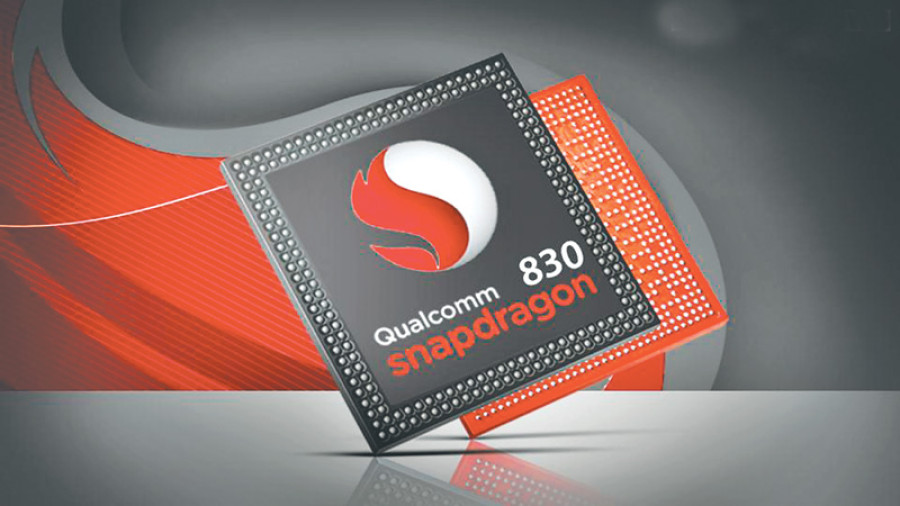Entertainment
Processors : The Small vs the Big
Modern smartphones today are equipped with high-performance CPUs that boast multiple core counts.
Prajesh SJB Rana
Modern smartphones today are equipped with high-performance CPUs that boast multiple core counts. While it might have been strange to see a multi-core CPU in a smartphone a few years ago, it’s all about quad-cores, hexa-cores and octa-cores. While there is a significant difference in the performance between these different kinds of processors, their core-count is barely reflective of the CPU’s overall performance. Furthermore, what differentiates your mobile processors from the processors that we have inside our computers and laptops? And if a processor’s speed is proportional to the number of cores that it has, shouldn’t mobile processors perform as fast as a desktop CPU? If so, why does your laptop’s Core i7 handle massive programmes like Photoshop, Premier and 3DMax with ease while the octa-core processor on your phone struggles with small mobile applications?
This is because there are different reasons that mobile CPUs differ from desktop CPUs. The performance difference also comes from the different kinds of processes that they are built to handle. While desktop CPU manufactures focus solely on performance, regardless of size and power consumption, mobile CPU manufactures have to keep these aspects of the CPU in mind. A CPU that burns through your battery in 10-15 minutes but performs just as well as your desktop CPU doesn’t have practical usage in the smartphone industry. So considering all of these aspects, we can map what differentiates mobile and desktop CPU performance.
Before the development of parallel processing CPUs, both Intel and AMD were undergoing a speed war. This was dubbed the MHz wars. The MHz wars were based on the core clock speed of the CPU and this made a lot of sense when CPUs were manufactured with a single CPU core. The clock speed of a CPU, measured in GHz today, is representative to how quickly the CPU can process data. This means that in a single second, a 1.8 GHz processor can perform 1,800,000,000 clock cycles. So this would mean that the higher clock speed a processor has, the more data it can process in a second. While this would be the case with older single core CPUs; today’s multi-core CPUs depend less of instructions per-cycle but rather optimise the whole processing cycle by optimising the pipeline by sending multiple instruction cycles at the same time. Thus, the multiple core in modern CPUs.
But even with multi-core CPUs, there are clock speeds and they’re not as important as they had been years ago. This is because a single core 3.0 GHz processor performs horribly when compared to a dual-core 2.0 GHz processor. Plus, today, CPUs have turned more efficient by optimizing the CPU core rather than pushing for speeds. So, speeds are only relative to how well the processor performs when compared within the same family. Architecture plays a much bigger role today, not only with CPUs but with GPUs as well because with each new architecture, the efficiency of processing within the CPU die is significantly increased. This is also why Intel has stuck with their i3, i5 and i7 lines, while improving on the microarchitecture with each new generations.
So what do I mean by advancements in microarchitecture? Well, for modern CPUs, the number of cores or the speeds plays a very basic role when considering the performance of the processor. Today, CPUs are better judged by the Thermal Design Power (TDP) and the Feature Fabrication Size (FAB) size of the CPU. These are all improvements in the microarchitecture of the CPU and improvements of these features are why even a sixth generation i3 processor beats an i5 from the first or second generation.
Thermal Design Power (TDP) is a measure of how much heat a CPU produces while processing extensive workloads. To process these high amounts of data, the
CPU needs to work with more power and the more power the CPU pulls, the more heat it produces. So the higher the TDP, the more performance you can expect from a CPU die. Now take a look at the difference between the TDP of a desktop processor that does not care about the power usage and a mobile CPU for whom power consumption is a very important aspect. Mobile CPUs usually work at a TDP of around 2-4 Watts while even the lowest 2012 CPU has a TDP of around 45 Watts. Just considering how much power the 2012 CPU utilises should paint of picture of just how powerful the desktop CPU is. But also consider that these bigger TDP CPUs produce more heat which is why desktop computer opt for active cooling systems like Fan-cooling and water-cooling. Your smartphone does not have a fan inside, which would mean that it works with passive cooling. Thus, since the smartphone does not have a cooling unit to help keep the processor cool, the CPU will have to work at lower TDP to avoid fire-hazards.
The Fabrication of the CPU is the process used to create integrated circuits inside a CPU die. The smaller the circuits inside a CPU, the lower the latency. Imagine people talking to each other from different corners of a room and imagine talking to people huddled in the middle of the room. Just like how difficult it would be for you to understand people farther away from people close by, the smaller the FAB size, the faster the processing unit. Mobile processors usually have a FAB size of 28 nm while modern processors are usually built much tighter at 22 nm. While modern sixth and seventh generation Intel processors are even tighter at 14 nm.
But apart from these specific CPU design difference between mobile and desktop CPUs, there are also other factors like instructions sets and die sizes. Instruction sets are the instructions that applications send to the CPU for it to understand how to process the data. While desktop CPU work with either x32 or x64 bits of instructions, mobile CPUs are usually working with ARM instructions that are not as complex as the desktop ones. While ARM also has its own x64 bit processors, they work with fewer transistors because of the simplicity of the instruction set. Mobile processors are also smaller because they need to sit comfortably inside your mobile device while desktop processors are much larger.
Considering these reasons, it doesn’t come as much of a surprise that mobile processors aren’t as effective or fast as desktop processors. But it is also because the need of both of these processors are vastly different. While desktop processors would only focus on performance, mobile processors have a lot of additional things to work with regardless of speed. And while consumers tend to want more and more performance out of their smartphones, it is up to the manufacturers to manufacture processors that balance both of these needs. But as comparing desktop CPUs to mobile CPUs go, smartphone processors can’t even dent the performance rate of the desktop CPU. But with the advancements we’ve seen in the smartphone industry maybe that will change in the days to come.




 18.95°C Kathmandu
18.95°C Kathmandu










